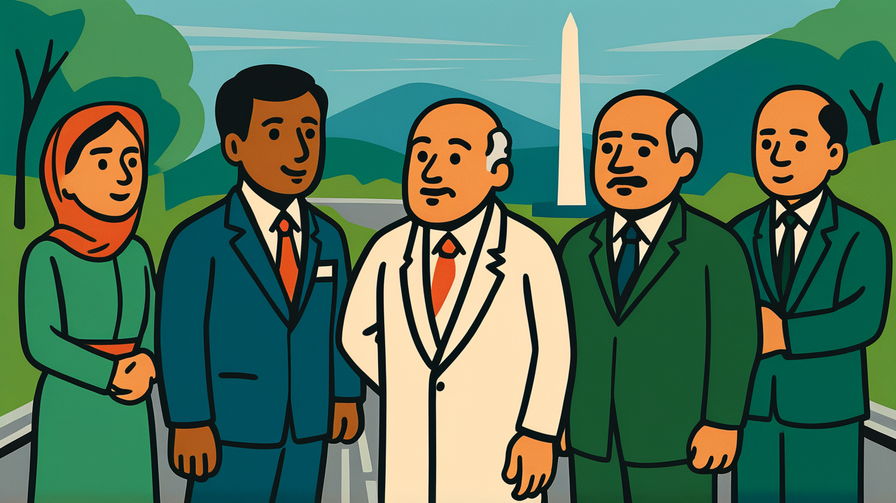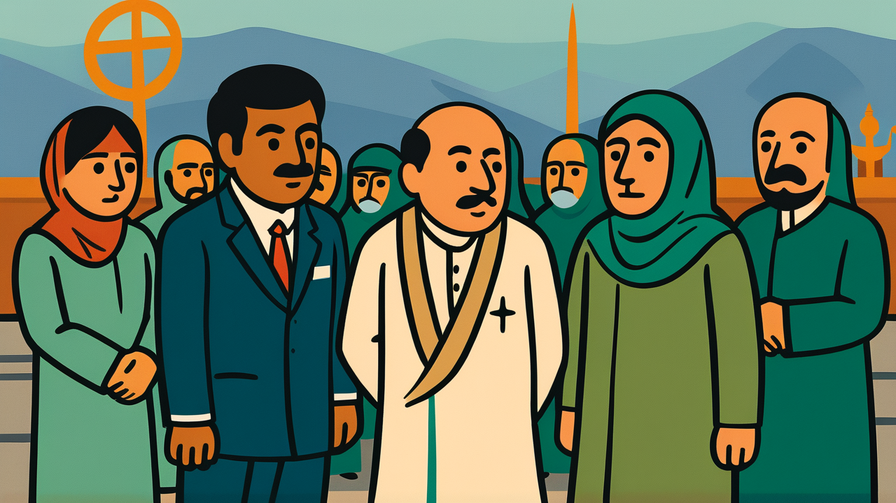[Disclaimer] This article is reconstructed based on information from external sources. Please verify the original source before referring to this content.
News Summary
The following content was published online. A translated summary is presented below. See the source for details.
Pakistan finds itself at a critical strategic crossroads, juggling relationships with major powers while facing severe internal challenges. The country’s traditional alliance with the United States has grown strained as Pakistan deepens ties with China through the China-Pakistan Economic Corridor (CPEC), a $62 billion infrastructure project. Meanwhile, tensions with India remain high over Kashmir, and instability in Afghanistan creates security concerns along Pakistan’s western border. Domestically, Pakistan grapples with a severe economic crisis, with inflation exceeding 30% and foreign reserves critically low. The military’s influential role in politics continues to create tensions with civilian leadership. As regional dynamics shift, Pakistan must carefully balance competing interests from Washington, Beijing, and regional neighbors while addressing pressing domestic needs including terrorism, economic reform, and democratic governance.
Source: Global Voices
Our Commentary
Background and Context

Pakistan has been a key player in South Asian politics since its creation in 1947 when British India was divided into two countries. Located between India, China, Afghanistan, and Iran, Pakistan’s geographic position makes it strategically important for world powers. For decades, Pakistan was a close U.S. ally, especially during the Cold War and after 9/11, receiving billions in military and economic aid.
However, relationships have shifted dramatically. The China-Pakistan Economic Corridor (CPEC), launched in 2015, represents China’s massive investment in Pakistani infrastructure including ports, highways, and power plants. This has worried the United States, which sees China as its main global competitor. Pakistan now finds itself caught between its old ally (the U.S.) and its new economic partner (China), unable to fully satisfy either.
Expert Analysis
Pakistan’s balancing act reflects broader changes in global power dynamics. As U.S. influence in the region has decreased following its withdrawal from Afghanistan, China has filled the vacuum with economic investments. However, this shift brings new anxieties. Chinese loans for CPEC projects have increased Pakistan’s debt burden, with some economists warning of a potential debt trap.
The military’s role remains central to understanding Pakistan’s strategic decisions. The Pakistani military controls significant portions of the economy and has ruled the country directly for nearly half its existence. This military influence shapes foreign policy decisions, often prioritizing security concerns over economic development or democratic values.
Additional Data and Fact Reinforcement
Pakistan’s current challenges by the numbers:
• Population: 240 million (world’s 5th largest)
• Inflation rate: Over 30% (making basic goods unaffordable for many)
• Foreign debt: $130 billion (requiring constant new loans to pay old ones)
• Youth unemployment: 11% officially (likely much higher in reality)
• Defense budget: $10 billion annually (significant portion of national spending)
Strategic relationships:
• China: Invested $62 billion through CPEC, Pakistan’s largest trade partner
• United States: Provided over $33 billion in aid since 2001, but relations cooling
• India: No trade relations, ongoing disputes over Kashmir
• Afghanistan: Security concerns with Taliban government, refugee crisis
Related News
Recent developments have intensified Pakistan’s strategic dilemma. The Taliban’s return to power in Afghanistan in 2021 created new security challenges, with cross-border attacks increasing. The International Monetary Fund (IMF) approved a crucial $3 billion bailout for Pakistan in 2023, but with strict conditions requiring economic reforms that are politically difficult.
Regional dynamics are also shifting. India’s growing economy and closer ties with the United States have increased pressure on Pakistan. Saudi Arabia and the UAE, traditional supporters, now maintain strong economic ties with India, reducing Pakistan’s diplomatic options in the Middle East.
Summary

Pakistan stands at a genuine crossroads where old certainties no longer apply and new partnerships bring both opportunities and risks. The country must navigate between maintaining security, achieving economic stability, and preserving sovereignty while multiple powers pull in different directions. Success requires skillful diplomacy, economic reforms, and addressing internal challenges like extremism and governance. The choices Pakistan makes in the coming years will shape not only its own future but also the stability of a region home to nearly 2 billion people.
Public Reaction
Pakistani public opinion is divided. Many welcome Chinese investment as vital for development, while others worry about becoming too dependent on Beijing. Young Pakistanis increasingly question military spending when schools and hospitals lack resources. Social media debates reflect frustration with both traditional politics and economic hardship, with many calling for focus on domestic issues over regional power games.
Frequently Asked Questions
Q: What is CPEC and why is it important?
A: The China-Pakistan Economic Corridor is a collection of infrastructure projects worth $62 billion. It includes highways, railways, power plants, and the strategic Gwadar port. For China, it provides a shorter route to the Arabian Sea. For Pakistan, it promises development but also brings massive debt.
Q: Why are US-Pakistan relations strained?
A: Several factors caused strain: Pakistan’s perceived support for Taliban elements, growing ties with China, and US concerns about Pakistan’s nuclear program. The US withdrawal from Afghanistan also reduced Pakistan’s importance as a strategic partner, leading to decreased aid and cooperation.
Q: How does Pakistan’s economy affect its strategic choices?
A: Economic weakness limits Pakistan’s options. The country needs loans and investments from multiple sources, forcing it to maintain good relations with China, the IMF, Saudi Arabia, and others. This economic dependence sometimes conflicts with strategic preferences, creating difficult compromises.


